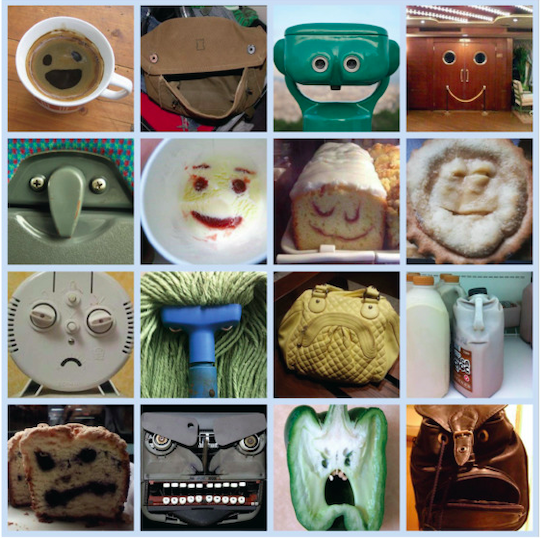There’s a reason your toast looks familiar and your washing machine looks cross.
Would you pay $28,000 for a 10-year-old grilled cheese sandwich? Or how about $25,000 for a piece of burnt toast?
As unlikely as this sounds, thanks to a phenomenon called pareidolia someone somewhere was indeed prepared to shell out the big bucks for such items.
Pareidolia describes how our human brains are wired to see faces in everyday objects, such as the Virgin Mary’s visage in a cheese toastie and her son’s phizog on the piece of scorched bread. It’s also why folks imagine a man in the moon and monsters in a tree trunk.

The concept has been recognised for decades, but recently scientists at the University of Sydney have discovered another feature of pareidolia: Not only do humans see faces in inanimate objects, we process the expressions of these faces as if they were coming from as real person.
In research published in Proceedings of the Royal Society B: Biological Sciences, our neuroscientists argue that there is an evolutionary benefit for this phenomenon: the need to instantly judge whether a face is a friend or a foe.
“From an evolutionary perspective, it seems that the benefit of never missing a face far outweighs the errors where inanimate objects are seen as faces,” Professor David Alais, lead author of the study from the School of Psychology, says in a media release.

“There is a great benefit in detecting faces quickly,” he said, “but the system plays ‘fast and loose’ by applying a crude template of two eyes over a nose and mouth. Lots of things can satisfy that template and thus trigger a face detection response.
“We know these objects are not truly faces, yet the perception of a face lingers.
“We end up with something strange: a parallel experience that it is both a compelling face and an object. Two things at once. The first impression of a face does not give way to the second perception of an object.
“Pareidolia faces are not discarded as false detections but undergo facial expression analysis in the same way as real faces.”
So, if your cheese muffin looked angry this morning, don’t take it too personally. And if it bears a striking resemblance to the 45th president of the US, put it on eBay quick smart.
If you see an inanimate object looking at you funny, send a pic to felicity@medicalrepublic.com.au.


